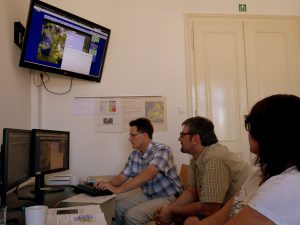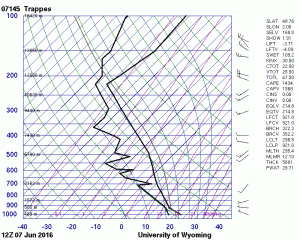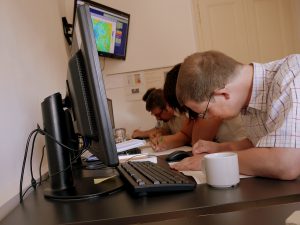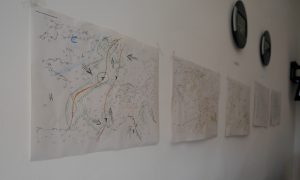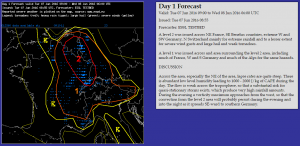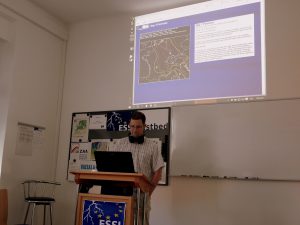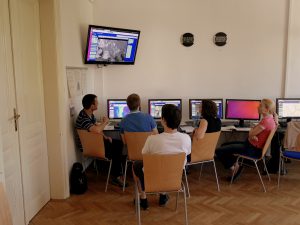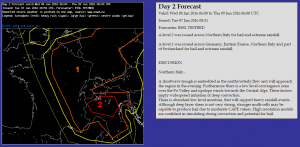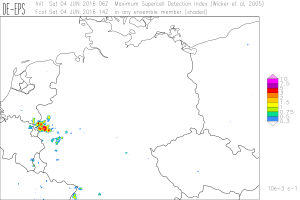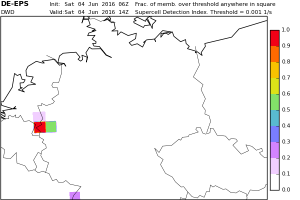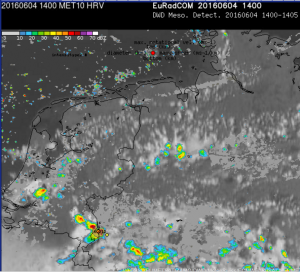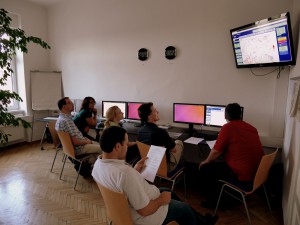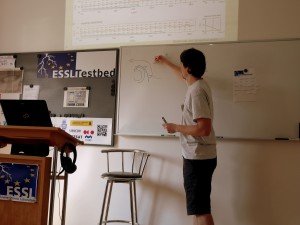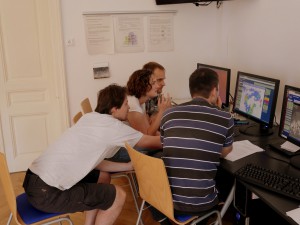We had an interesting afternoon session with much convection affecting the area that was highlighted in the Day1 outlook. Having pulsating convection, the collision of different storms as well as several convergence lines that we analysed in the surface maps, it was quite challenging to tell about the further development of the convective situation, especially over Northeastern France.
The main focus was on excessive precipitation events. 12 UTC soundings showed almost no wind speed throughout low- and mid levels. So it was quite likely that storm movement is quite small and driven by the dynamics of the storms (cold-pool). In addition rather humid vertical profiles with steep lapse rates were visible.
While team 1 was concentrating on the Western domain where we have issued the outlook for, team 2 was looking for northern Germany were storms organized along a pronounced convergence line. Having in mind the situation yesterday and the day before, the participants decided to include tornados in their mesoscale discussion. This finally was the right decision having a first report of a tornado near Hamburg (https://www.facebook.com/Wetterspiegel.de/videos/1108717095860456/).
Tomorrow will probably be another interesting day with short wave features that introduce a synoptic-scale lift mechanism.

